Team:UCL/synbio
From 2014.igem.org
(Difference between revisions)
Adamdenyer (Talk | contribs) (Created page with "{{:Team:UCL/Template:htmlheader}} <html> <body class="index"> </html> {{:Team:UCL/Template:pageheader}} <html> <!-- begin #page - the container for everything but header --> ...") |
Adamdenyer (Talk | contribs) |
||
| Line 15: | Line 15: | ||
<div class="hero-unit"> | <div class="hero-unit"> | ||
<div class="container"> | <div class="container"> | ||
| - | <h2> | + | <h2>SynBio?</h2> |
</div> | </div> | ||
<!--close container--> | <!--close container--> | ||
| Line 29: | Line 29: | ||
<!--begin primary content--> | <!--begin primary content--> | ||
<h2>What is SynBio?</h2> | <h2>What is SynBio?</h2> | ||
| - | <p>< | + | <p><strong>Synthetic Biology - modifying life itself</strong>Synthetic Biology aims to design, build, and test novel biological systems. It consists of conscious and deliberate modification(s) of living organisms by acting on their genetic code. While genetic engineering, in general, is the insertion of foreign genes from one organism to another, synthetic biology wants to go one step further by treating DNA as a true code that can be modified, written and rewritten, in order to obtain new and more complex functions. Once the sequence is designed, this DNA is synthesised and inserted into a living organism, reprogramming its function at our will, and allowing us to modify the ultimate part of nature: life itself. |
| + | We are therefore able to move the genetic information from the physical world to the digital world, where we can alter it intentionally, before bringing it back to the physical world to modify its features and behaviour.</p> | ||
</div> | </div> | ||
<!-- close span9 primary-column--> | <!-- close span9 primary-column--> | ||
Revision as of 11:45, 20 June 2014
 "
"
